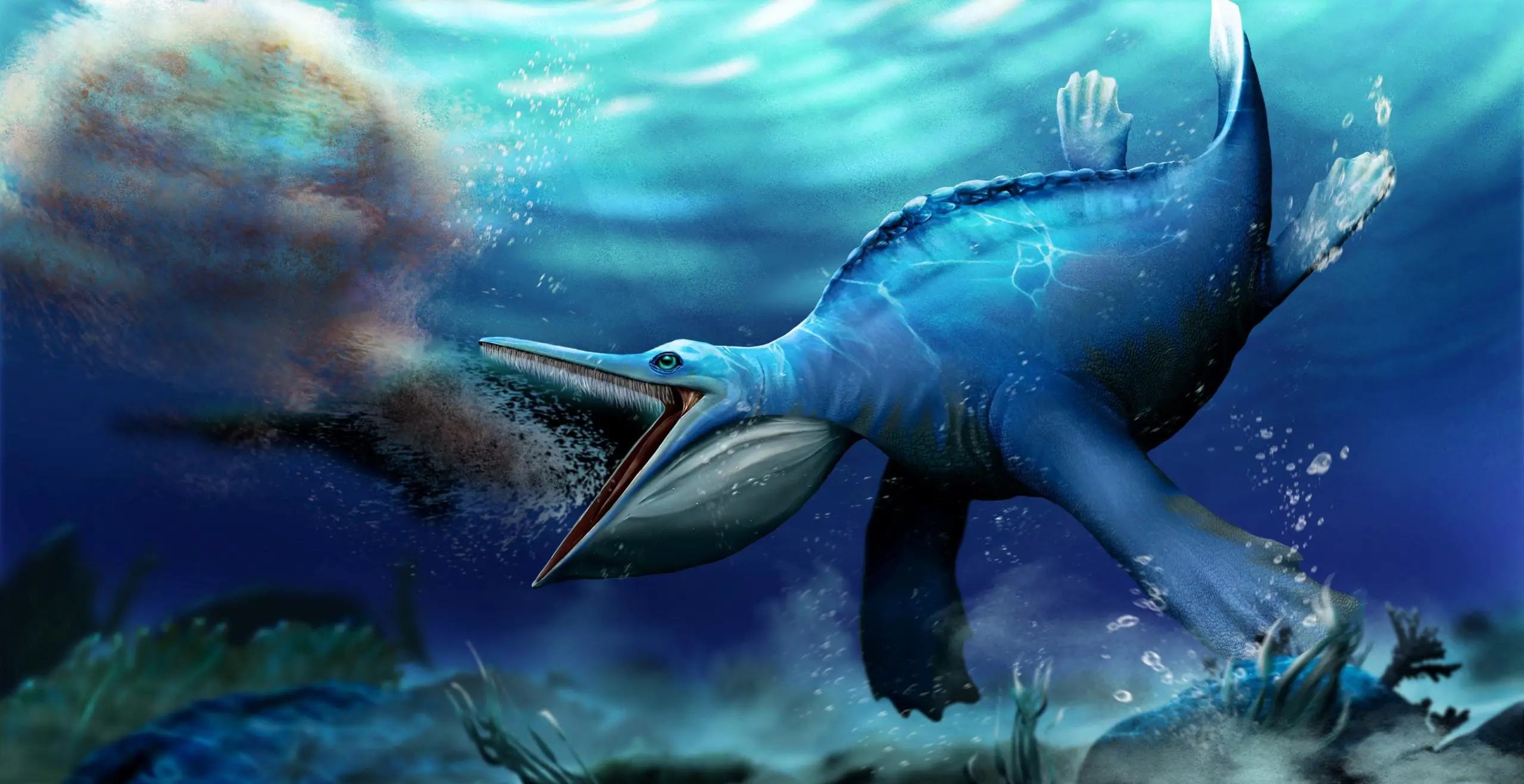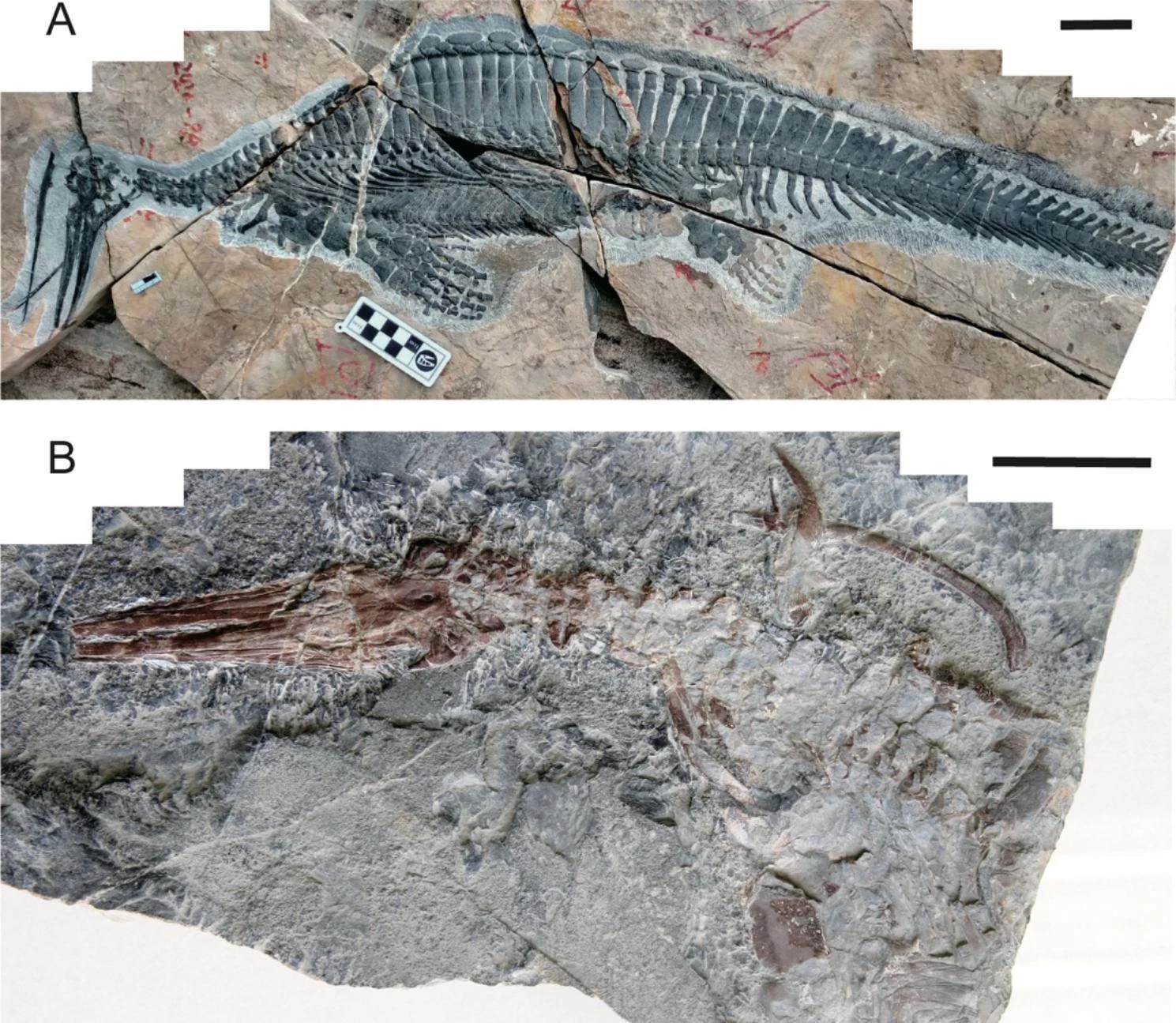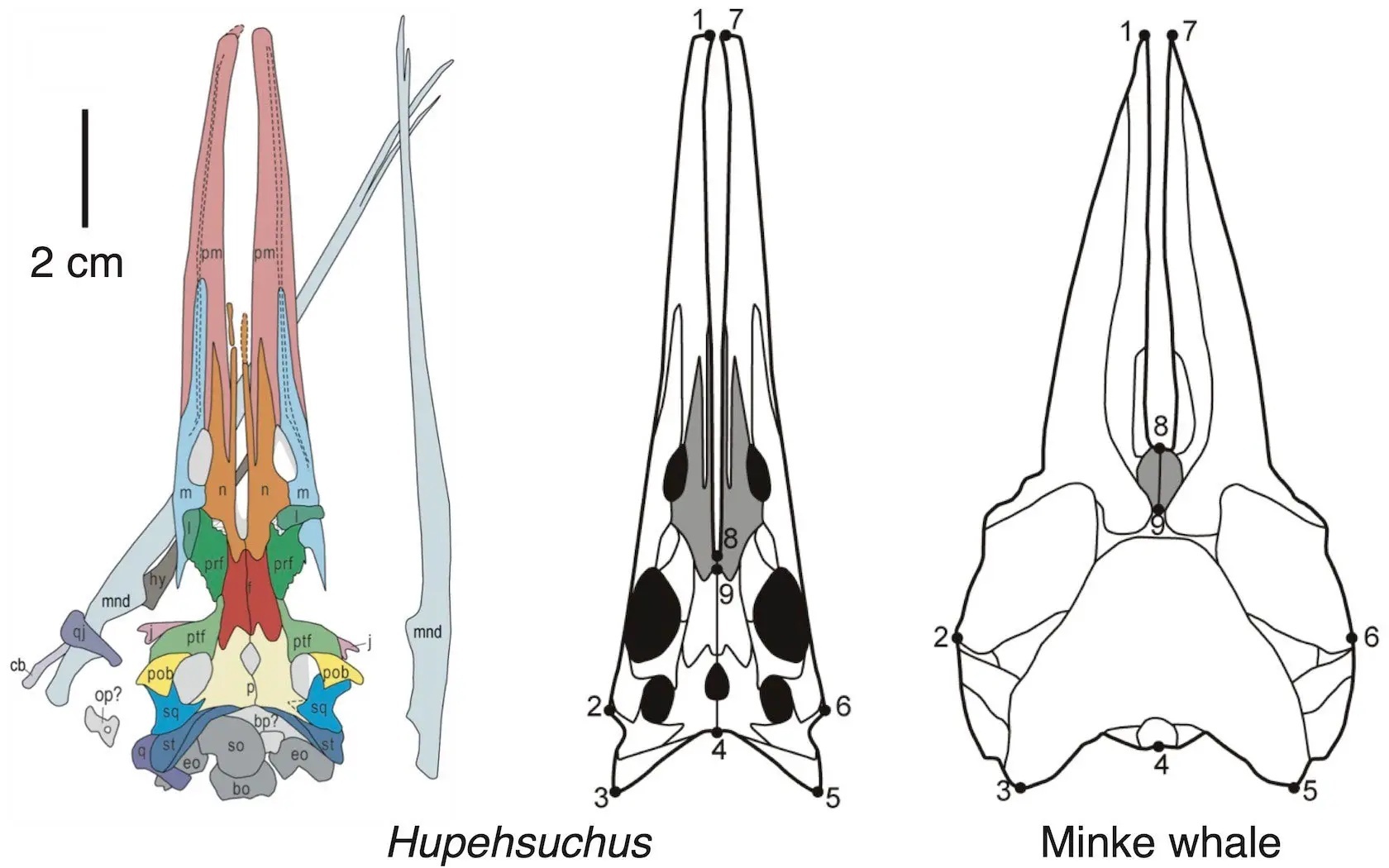A remarkable fossil from China has revealed, for the first time, that a group of reptiles had already developed a whale-like filter feeding technique 250 million years ago. This groundbreaking finding paints an evocative image of the prehistoric marine environments.

A collaborative effort between Chinese and British researchers has recently revealed the skull of the ancient marine reptile named Hupehsuchus. It possessed an expanding throat area, enabling it to engulf large masses of water containing shrimp-like prey. Additionally, it had features similar to those found in baleen whales, permitting the filtering of food while it was in motion.
The research team uncovered that the Hupehsuchus craniums had the same furrows and slots on the sides of its mouth that can also be seen in baleen whales, which have keratin plates instead of teeth.

“We were amazed to discover these adaptations in such an early marine reptile,” said Zichen Fang of the Wuhan Center of China Geological Survey, who led the research. “The hupehsuchians were a unique group in China, close relatives of the ichthyosaurs, and known for 50 years, but their mode of life was not fully understood.”

The hupesuchians lived in the Early Triassic, about 248 million years ago, in China and they were part of a huge and rapid re-population of the oceans,” said Professor Michael Benton, a collaborator at the University of Bristol’s School of Earth Sciences. “This was a time of turmoil, only three million years after the huge end-Permian mass extinction which had wiped out most of life. It’s been amazing to discover how fast these large marine reptiles came on the scene and entirely changed marine ecosystems of the time.”
New skull discoveries and insights
Professor Long Cheng, from the Wuhan Center of China Geological Survey, reported that two new hupehsuchian skulls had been uncovered during the project and they were in an even better state than past discoveries. “These were more complete than earlier finds and showed that the long snout was composed of unfused, straplike bones, with a long space between them running the length of the snout.” This structure can only be seen in today’s baleen whales, which have flexible snouts and lower jaws that can be extended to a great size as they are swimming, engulfing little prey.
According to Li Tian, a partner from the University of Geosciences Wuhan, a critical factor they discovered was the teeth – or lack thereof. Unlike other toothed whales like dolphins and orcas, modern baleen whales have no teeth. Instead, they possess keratin-based baleen, similar to what can be found in hair, feathers and nails, which are located in grooves along the jaws. Additionally, Hupehsuchus had the same grooves, suggesting that it had evolved its own form of baleen.
This discovery have truly astonished scientists and brought new insights into the ancient world. The 250-million-year-old reptile fossil, Hupehsuchus, with its whale-like filter-feeding strategy, has shed light on the remarkable adaptability and diversity of prehistoric marine life. These findings not only provide a fascinating glimpse into the past but also contribute to our understanding of early marine ecosystems and the intricate balance of nature.
Chinese scientists have once again expanded our knowledge of the natural world, sparking further curiosity and opening up new avenues of research. With each remarkable discovery, we are reminded of the endless wonders and mysteries that our planet holds.
The study was originally published in the journal Ecology and Evolution on August 3rd, 2023.
After reading about the 250-million-year-old reptile fossil, Hupehsuchus, read about Perucetus Colossus Whale: Heaviest animal that ever lived.




